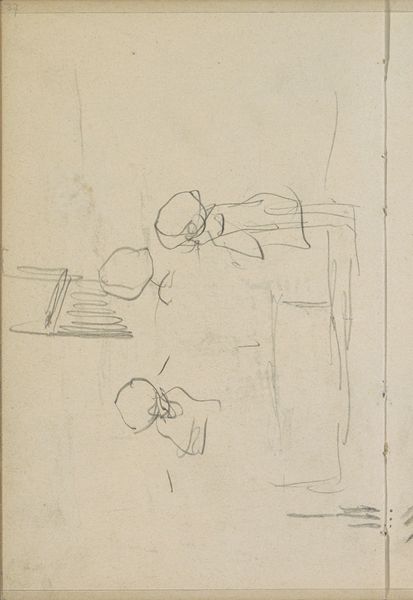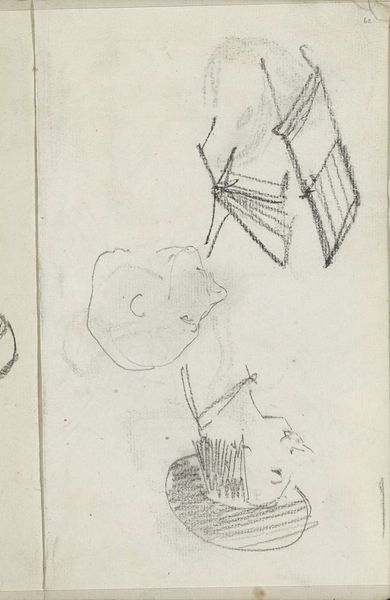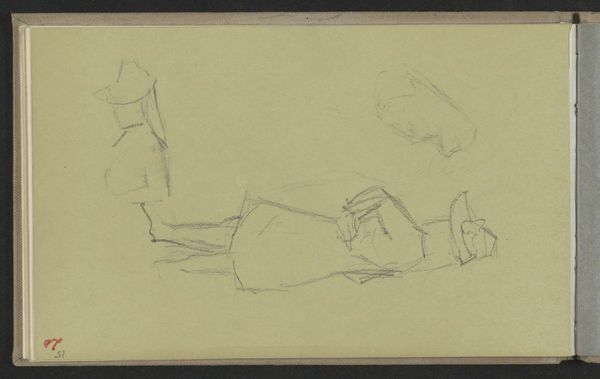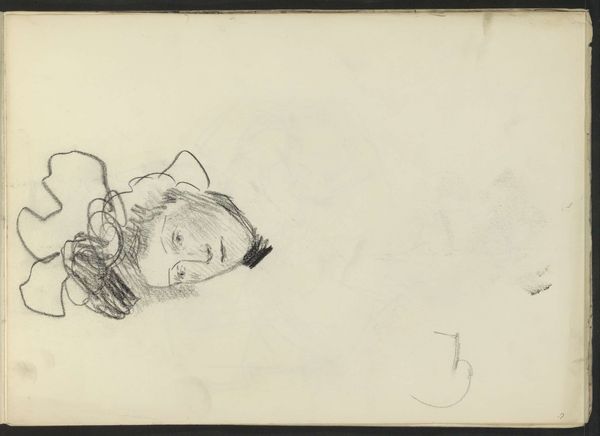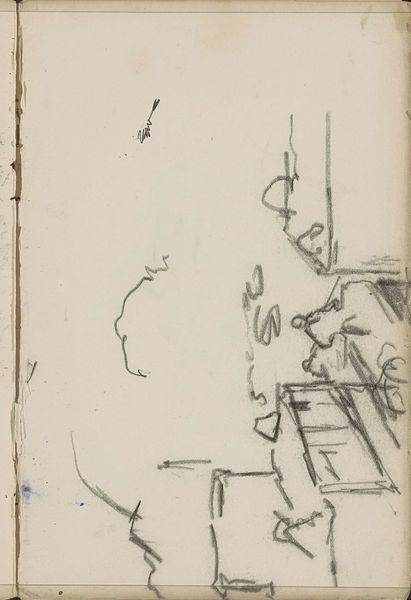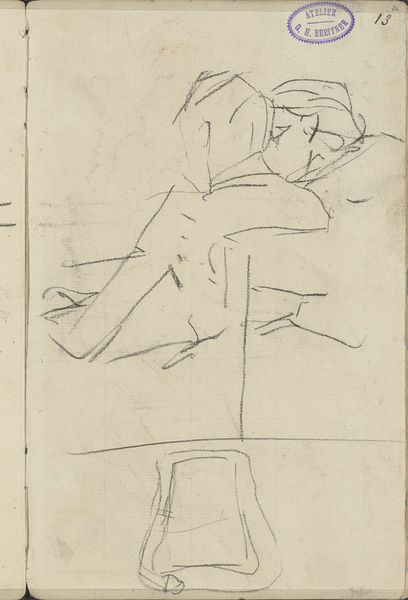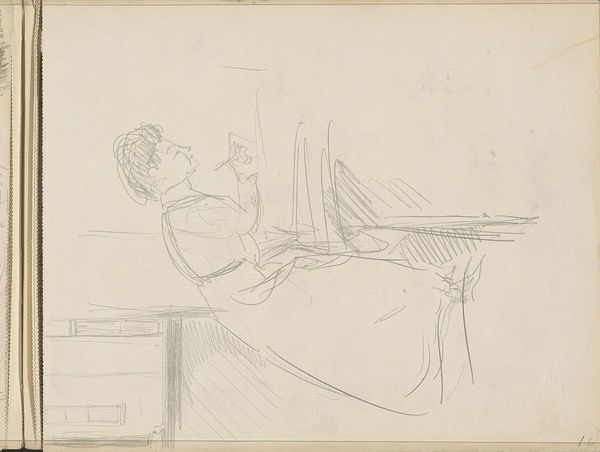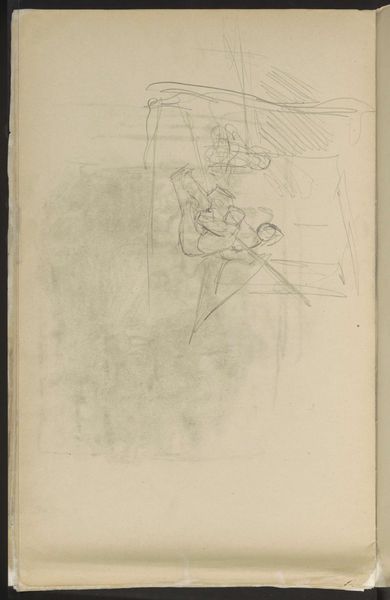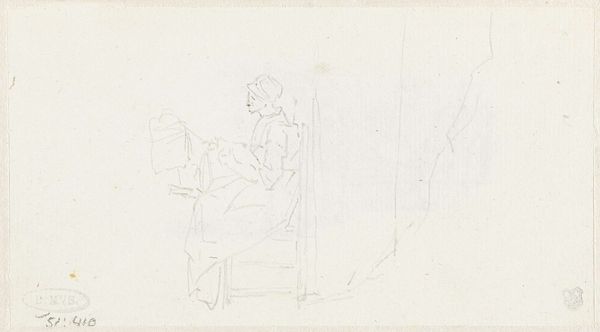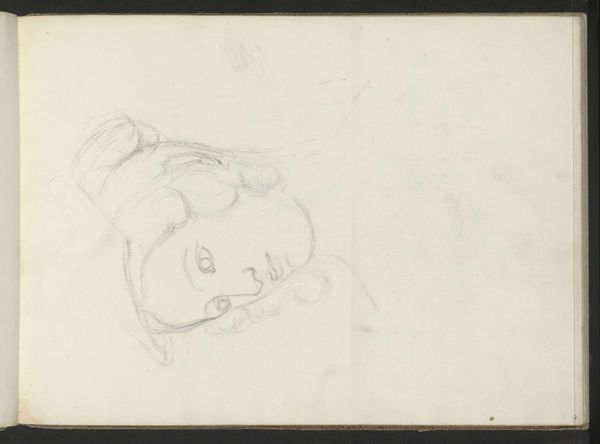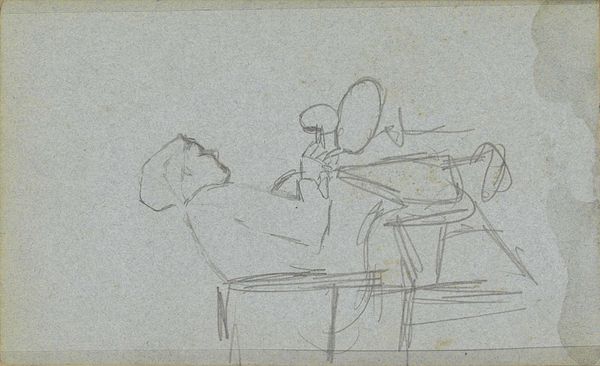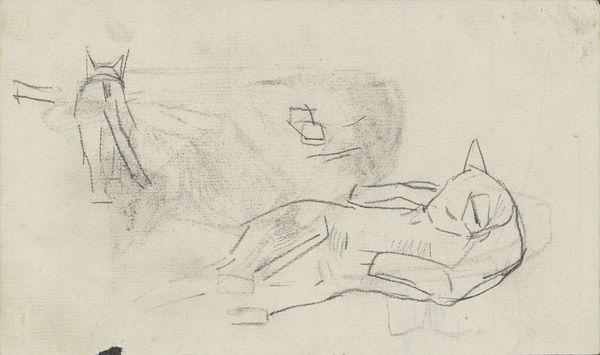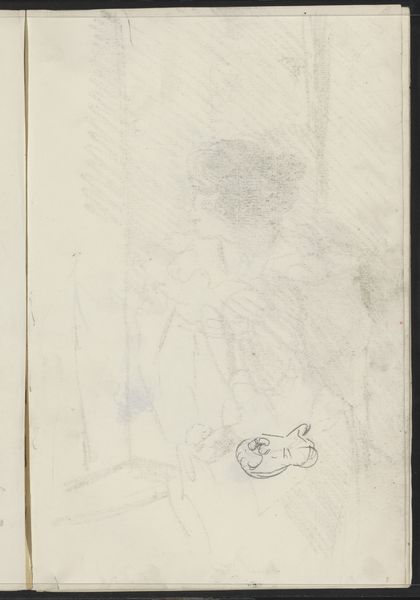
drawing, paper, pencil
#
portrait
#
drawing
#
dutch-golden-age
#
paper
#
pencil
#
realism
Copyright: Rijks Museum: Open Domain
Editor: This is "Vrouwenkop en een schildersdoek leunend tegen een stoel," a pencil drawing on paper by Jozef Israëls, created sometime between 1834 and 1911. It’s currently at the Rijksmuseum. It feels so... incomplete, like a glimpse into the artist's process. What catches your eye in this sketch? Curator: Initially, the spatial relationships. Note how the female figure's delicate rendering sharply contrasts with the angular, almost aggressively linear depiction of the chair and canvas. This visual disjunction creates an immediate tension, fracturing the image’s potential for wholeness. Do you perceive this as a conscious choice by the artist or simply an unfinished study? Editor: I hadn't really thought of it as intentional, but now that you mention it, the chair does seem… less refined, almost blocking the more delicate woman’s face. Why juxtapose them that way? Curator: Perhaps Israëls is subtly commenting on the artist's workspace, the creative process itself. The woman’s graceful form is positioned in dialogue with the tools of artistic production – canvas, chair – suggesting an interaction between muse and means. Note too, how the chair almost traps the canvas. Does the canvas have autonomy, and is this woman’s figure bound to this studio furniture? What relationship is the artist observing, here? Editor: It is a really curious positioning now that I think about it. She’s on the periphery, almost secondary to the implements. Curator: Precisely. Consider the economy of line. The rapid, almost nervous quality of the pencil strokes. It contributes to the raw energy of the sketch, and conveys a certain dynamic tension that underpins the entire composition. The artist’s marks really build an interesting spatial relationship. Editor: Seeing how the different styles of strokes influence how I see the space differently is something I definitely didn’t realize at first. Curator: Indeed. Formal analysis reveals the profound interconnectedness of these compositional elements. A closer study offers new insights.
Comments
No comments
Be the first to comment and join the conversation on the ultimate creative platform.
